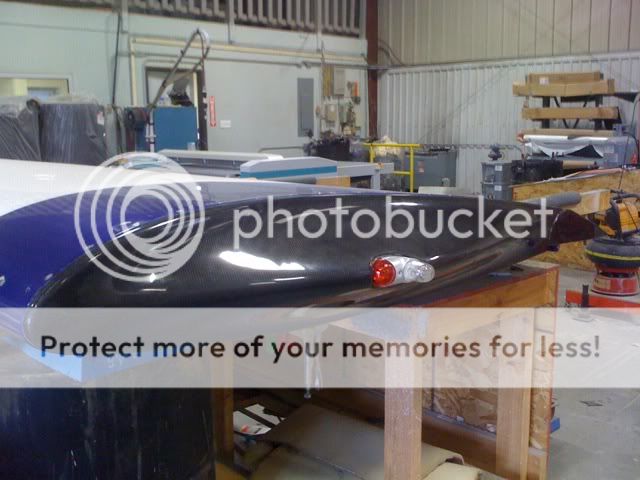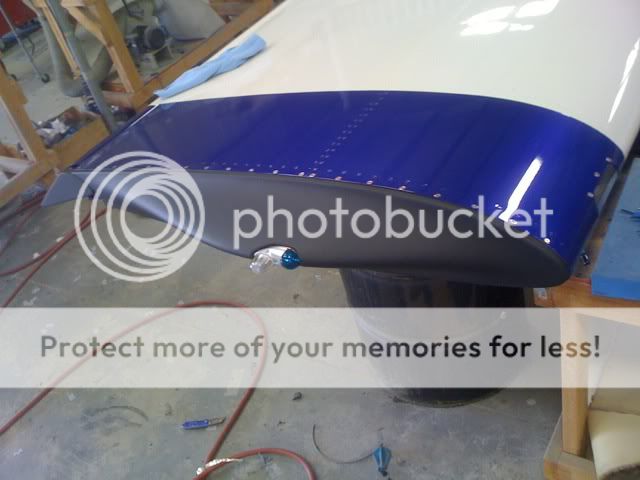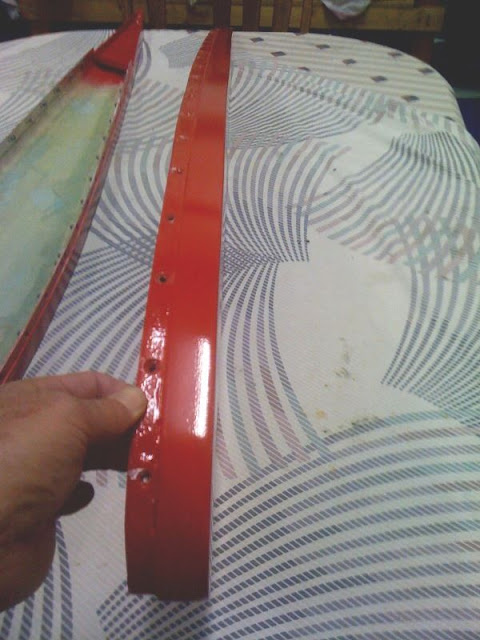The triangular wing-tips Jim Smith has mounted to his RV-6 have not only increased his speed above 8000' dalt, but also down to at least 4000' dalt. He's getting 2 mph more at 4000' dalt, 3 mph more at 8000' dalt, 5 mph at 10,000', and 7 mph at 11,000'. To demonstrate in a significant manner to all of you folks how dramatic this is, I would propose the following demonstration. I would like one or more of you with 150HP RV-6s, as is Jim's, with no engine enhancements, (he runs on mogas), or even 160 HP, to volunteer to do some side-by-side runs with Jim on at least two separate two-way, GPS-measured runs at 8000' dalt, where Van's gives his speeds, calling out your ground speeds along the way. We might even get some higher speed planes to accompany them and verify their ground-speeds to keep it on the up-and-up. Since the 160 has a 2.2% speed advantage over a 150HP at the same rpm, we can adjust the speed of the one of the planes for HP and RPM to normalize the results. If we can get some planes within 400 miles of Jim's home in Wichita, then each of them could fly a little over and hour to a meeting place.
I'm sure many of you have heard of the Oswald efficiency factor which gives the percentage of a wing span that is truly effctive. On a typical rectangular or tapered wing with a square tip and a well-shpaed tip it can get to 82%; a rounded tip like a Cub drops it to 75%. However, an elliptical wing is 100%. If you can reshape the end of the wing to bring it closer to the elliptical ideal, you can go beyond the 82% and approach the 100%. In my number-crunching of why Jim's tips performed better than I predicted, I found that his wings are running 91%! That's why he's even seeing an improvement below 7000' where I told him that hiis speed would drop slightly due to more wing area. Not only is his speed better, but he lands slower and takes-off and climbs faster, due to the reduced induced drag!
I sure hope we can get some takers in the months before Oshkosh.
I'm sure many of you have heard of the Oswald efficiency factor which gives the percentage of a wing span that is truly effctive. On a typical rectangular or tapered wing with a square tip and a well-shpaed tip it can get to 82%; a rounded tip like a Cub drops it to 75%. However, an elliptical wing is 100%. If you can reshape the end of the wing to bring it closer to the elliptical ideal, you can go beyond the 82% and approach the 100%. In my number-crunching of why Jim's tips performed better than I predicted, I found that his wings are running 91%! That's why he's even seeing an improvement below 7000' where I told him that hiis speed would drop slightly due to more wing area. Not only is his speed better, but he lands slower and takes-off and climbs faster, due to the reduced induced drag!
I sure hope we can get some takers in the months before Oshkosh.
















